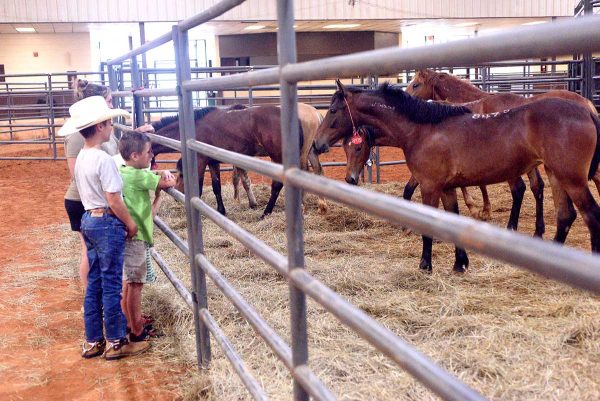Invasive ‘superweed’ threatens soybeans, other crops in Midwest
Published 1:50 pm Thursday, February 2, 2017

- Palmer amaranth, a noxious weed that can grow up to eight feet tall and choke out crops like soybeans and corn, could affect crop yields in several Midwestern states in the coming months.
ST. PAUL, Minn. — An invasive weed has lawmakers and officials in Minnesota scrambling to protect the state’s crops.
Palmer amaranth, a noxious weed that can grow up to eight feet tall, crept into two counties in western Minnesota last fall after it got into federal conservation program seed mixes used to plant native grasses. The weed has been identified in several other Midwest states, including Illinois, Indiana, Michigan, Missouri and Ohio. Agronomists estimate it can choke out up to 90 percent of farmers’ corn yields and 80 percent of soybean yields.
In Minnesota, state agriculture officials warn the so-called superweed could devastate corn, soybean and other row-crop production over the next few years. That would undoubtedly impact the state’s agricultural commodities market, which produced roughly $7.3 billion in exports in 2014, according to a report from the Minnesota Department of Agriculture. Soybeans alone account for 70 percent of the state’s agricultural exports.
“We’ve certainly been expecting it at some time or another,” said Geir Friisoe, director of the Minnesota Department of Agriculture’s Plant Protection Division.
Native to the southwest U.S., Palmer amaranth can grow up to eight feet tall and choke out nearby plants. It quickly reproduces — a single female plant can produce up to 250,000 seeds, according to state officials. It’s resistant to a number of popular herbicides and its wood stems can damage harvesting equipment. Even after the plant is destroyed, seeds are able to grow in soil for up to five years.
In nearby Iowa, Palmer amaranth grew from about five counties to 49 counties — about half of the state — from 2015 through 2016.
The Mankato, Minnesota Free Press reports officials in that state are still investigating how Palmer amaranth was added to seed mixes, saying it was likely due to a single mix that violated state seed guidelines.
The Department of Agriculture is working on a study of Palmer amaranth in Minnesota, which is set to wrap up next month.
Agricultural organizations are urging lawmakers to act before the weed gains more of a foothold in the state. Industry lobbyists urged legislators to support Gov. Mark Dayton’s proposal to annually put $300,000 toward Minnesota’s noxious weed program, as well as an annual $500,000 for a state noxious weed grant program that would fund local government efforts to fight Palmer amaranth. They also want the state to consider mandating Minnesota-only seed mixes for native plants.
“If we can just stop it from coming in, then we have the best chance of defeating this,” said Joe Smentek, director of public affairs for the Minnesota Soybean Growers Association. “Once it’s here, once it’s in place, it’s a highly adaptable weed so it can really get around a lot of pesticides. It’s just much, much harder, much much more costly to do later on.”
State senators in Minnesota held a hearing Tuesday afternoon to discuss ways to prevent Palmer amaranth from spreading. Sen. Rich Draheim, R-Madison Lake, has authored a bill requiring farmers to report Palmer amaranth and other noxious weeds as soon as they find it.
“To me, this has a chance of having a bigger effect than the avian flu had on Minnesota,” Draheim said.
The Mankato, Minnesota Free Press contributed to this story.


